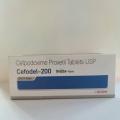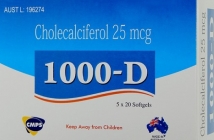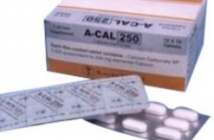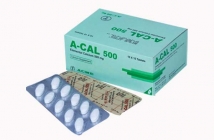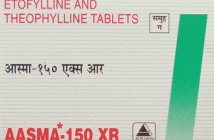Home / Categories / CEFIME 200MG

CEFIME 200MG
(10X10)
CEFPODOXIME-200MG
CEPHALOSPORINS
TIME PHARMACEUTICALS PVT LTD
Product Details
LEVOCETRIZINE
A to Z Drug Facts
LEVOCETRIZINE
Action
Indications
Contraindications
Route/Dosage
Interactions
Lab Test Interferences
Adverse Reactions
PrecautionsPatient Care Considerations
Administration/Storage
Assessment/Interventions
Patient/Family Education
(seh-TEER-ih-zeen)ZyrtecClass: Antihistamine
 Action Competitively antagonizes histamine at the H1 receptor site.
Action Competitively antagonizes histamine at the H1 receptor site.
 Indications Symptomatic relief of symptoms (nasal and nonnasal) associated with seasonal and perennial allergic rhinitis; treatment of uncomplicated skin manifestations of chronic idiopathic urticaria.
Indications Symptomatic relief of symptoms (nasal and nonnasal) associated with seasonal and perennial allergic rhinitis; treatment of uncomplicated skin manifestations of chronic idiopathic urticaria.
 Contraindications Standard considerations.
Contraindications Standard considerations.
 Route/Dosage
Route/Dosage
ADULTS & CHILDREN ³ 6 YR: PO 5 or 10 mg daily.
Hepatic Impairment: PO 5 mg daily.
Renal Impairment
CrU (31 ml/min or hemodialysis): PO 5 mg daily.
 Interactions None well documented.
Interactions None well documented.
 Lab Test Interferences May prevent or diminish otherwise positive reactions to skin tests.
Lab Test Interferences May prevent or diminish otherwise positive reactions to skin tests.
 Adverse Reactions
Adverse Reactions
CV: Palpitations; tachycardia; hypertension; cardiac failure; syncope. CNS: Somnolence; fatigue; dizziness; headache; paresthesia; confusion; hyperkinesia; hypertonia; migraine; tremor; vertigo; ataxia; dystonia; abnormal coordination, hyperesthesia; hypoesthesia, myelitis; paralysis; twitching; insomnia; sleep disorder; nervousness; depression; emotional lability; impaired concentration; anxiety; depersonalization; paranoia; abnormal thinking; agitation; amnesia; decreased libido; euphoria. DERM: Pruritus; dry skin; urticaria; acne; dermatitis; erythematous rash; increased sweating; alopecia; angioedema; furunculosis; bullous eruption; eczema; hyperkeratosis; hypertrichosis; photosensitivity; maculopapular rash; seborrhea; purpura; skin disorder; skin nodule. EENT: Pharyngitis; visual field defect; earache; blindness; loss of accommodation; eye pain; conjunctivitis; xerophthalmia; glaucoma; ocular hemorrhage; earache; tinnitus; deafness; sinusitis; nasal polyp; parosmia. GI: Dry mouth; nausea; vomiting; abdominal pain; diarrhea; anorexia; salivation; increased appetite; dyspepsia; flatulence; constipation; stomatitis; ulcerative stomatitis; aggravated tooth caries; tongue discoloration; tongue edema; gastritis; rectal hemorrhage; hemorrhoids; melena, eructation; enlarged abdomen; taste pervision; taste loss. GU: Urinary retention; polyuria; cystitis; dysuria; urinary tract infection; hematuria; micturition frequency; urinary incontinence; dysmenorrhea; female breast pain; intermenstrual bleeding; leukorrhea; menorrhagia; vaginitis. HEPA: Abnormal hepatic function. META: Thirst; dehydration; diabetes mellitus, weight gain. RESP: Epistaxis; rhinitis; coughing; bronchospasm; dyspnea; upper respiratory tract infection; hyperventilation; increased sputum; pneumonia; respiratory disorder. OTHER: Flushing; myalgia; arthralgia; arthrosis; arthritis; muscle weakness; lymphadenopathy; back pain; malaise; fever; asthenia; edema; rigors; pain; chest pain; leg cramps; ptosis.
 Precautions
Precautions
Pregnancy: Category B. Lactation: Excreted in breast milk. Children (< 6 yr): Safety and efficacy not established. Elderly patients: Side effect profile similar to younger patients. Renal and hepatic impairment: Dosage adjustment may be needed.
PATIENT CARE CONSIDERATIONS
 Administration/Storage
Administration/Storage
- Give as 2 single daily doses, without regard to meals.
- Available in PO tablets or liquid.
- Store tablets at room temperature (59°–86°F), liquid at 41°–86°F.
 Assessment/Interventions
Assessment/Interventions
- Obtain patient history, including drug history and any known allergies, especially to antihistamines.
- Assess for allergy symptoms (eg, rhinitis, conjunctivitis, hives) before and periodically throughout the therapy.
- Monitor pulse, blood pressure and respirations periodically throughout therapy.
- Observe for dizziness and excessive sedation.
OVERDOSAGE: SIGNS & SYMPTOMS Somnolence; restlessness, irritability.
 Patient/Family Education
Patient/Family Education
- Advise patient that drug may cause drowsiness and to use caution while driving or performing other tasks requiring alertness until response to medication is known.
- Advise patient that photosensitivity may occur and to take protective measures (eg, sunscreens, protective clothing) against exposure to ultraviolet light or sunlight until tolerance is determined.
- Caution patients to avoid using alcohol or other CNS depressants (eg, sedatives, hypnotics, tranquilizers).
- Instruct patient to take sips of water frequently, suck on ice chips or sugarless hard candy, or chew sugarless gum if dry mouth occurs.
- If patient is to have allergy skin testing, advise to avoid taking medication for at least 4 days before test.
Books@Ovid
Copyright © 2003 Facts and Comparisons
David S. Tatro
A to Z Drug Facts

